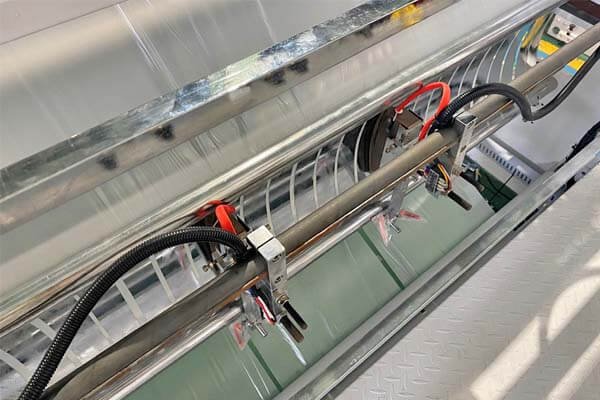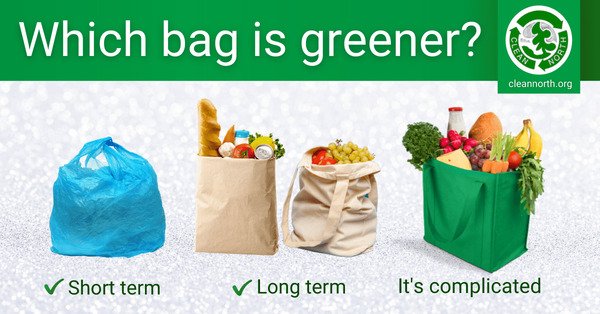
With increasing environmental concerns and tightening regulations, businesses are under pressure to move away from traditional plastic bags. Viable alternatives include biodegradable options, reusable materials, and recyclable paper.
Reusable bags (such as canvas or PP non-woven), biodegradable materials like PLA, and recyclable paper bags are currently the most effective substitutes for traditional plastic. BagMec® manufactures the specialized machinery required to produce these sustainable options.
The global phase-out of single-use plastics represents a permanent market shift. Consumers now expect brands to demonstrate environmental responsibility. A company’s choice of bag can reflect its values, and selecting the right alternative depends on product type, brand positioning, and customer expectations.
Switching to sustainable options can involve new production challenges. Biodegradable films, for instance, may be more sensitive to heat. Reusable bags require reinforced handles to ensure durability. Each material demands specific manufacturing techniques, and BagMec® designs machines to meet these requirements for a smooth transition.
Are Biodegradable Bags Better for the Environment?
"Biodegradable" suggests an eco-friendly solution, but its effectiveness depends on proper disposal.
Biodegradable bags, particularly those made from PLA, offer environmental advantages—but only if disposed of correctly in industrial composting facilities. Without this, their benefits are significantly reduced.

Types of Biodegradable Materials
Different biodegradable materials behave differently and require unique handling:
- PLA (Polylactic Acid): Made from renewable sources like corn starch, with characteristics similar to plastic. Requires specific tension and heat settings during manufacturing.
- PHA (Polyhydroxyalkanoate): Produced by microorganisms, it degrades in a variety of environments but is currently costlier.
- Starch-Based Plastics: Often blended materials that break down more easily. Suitable for applications like single-use garbage bags.
Disposal Infrastructure Matters
Most biodegradable bags need high heat and microbial activity—only available in industrial composting facilities—to degrade properly. In landfills, they can break down slowly and release methane. Effective use of these materials requires not only better products but also better public waste systems.
Biodegradable vs. Traditional Plastic: A Comparison
| Feature | Biodegradable Bags (PLA) | Traditional Plastic Bags (PE) |
|---|---|---|
| Raw Material Source | Renewable (corn, sugarcane) | Fossil Fuels (oil, gas) |
| Production Energy | Lower | Higher |
| Carbon Footprint | Lower overall | Higher overall |
| End-of-Life | Industrial Composting | Landfill or Ocean |
| Breakdown Time | Months (with composting) | Centuries |
BagMec®’s Role in the Transition
BagMec® assists clients in adapting to biodegradable materials. For instance, when US Eco-Brand aimed to produce fully compostable shopping bags, BagMec® modified a T-Shirt Bag Machine with a Smart Tension Control system to handle delicate PLA film, enabling high-quality, large-scale production.
Reusable Shopping Bags and Their Market Impact
Reusable bags have reshaped consumer habits and created opportunities for brand differentiation.
They reduce reliance on single-use plastics, offer a profitable product line for retailers, and serve as effective branding tools.
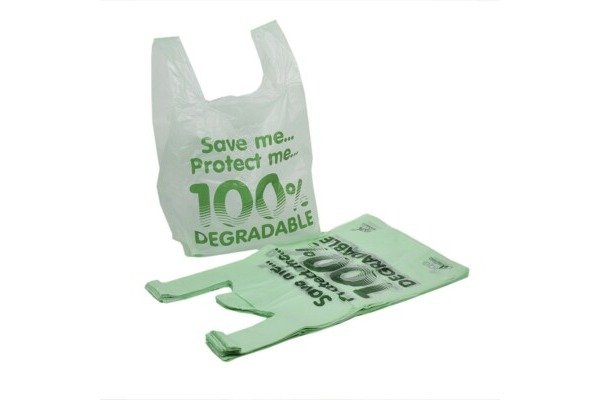
From Disposable to Durable
The shift to reusable bags reflects changing consumer priorities. Customers now accept—and often prefer—paying for bags that can be used multiple times. This opens markets for durable, branded products and new manufacturing opportunities.
Many producers now operate both high-speed T-shirt bag machines and Loop Handle Bag Machines to serve different segments.
Material and Design Options
Reusable bags require diverse materials and flexible manufacturing:
- PP Non-Woven: Affordable, durable, and easy to print. Ultrasonic welding provides strong handle attachment.
- Canvas and Cotton: Natural, appealing materials used by premium or eco-conscious brands.
- Laminated Films: Used for cold food or insulated bags. Multi-layer construction handled by lamination pouch machines.
Economic Considerations
Reusable bags cost more per unit but offer different business benefits:
| Aspect | Single-Use Plastic | Reusable Bags |
|---|---|---|
| Cost per Unit | ~$0.02 | ~$0.50 |
| Distribution | Free, adds cost | Sold, adds revenue |
| Branding | Minimal | High visibility |
| Customer Loyalty | Neutral | Enhances loyalty |
Precision in Manufacturing
Producing durable reusable bags requires reliable machinery. The Loop Handle Bag Making Machine (priced $33,000–$38,000) is designed for high-speed, automated production with reinforced handle attachment and consistent sealing.
How Businesses Can Choose the Right Eco-Friendly Bag
Selecting the appropriate eco-friendly bag involves balancing cost, performance, brand goals, and sustainability.
Businesses must assess their product requirements, branding goals, and customer expectations before choosing between paper, PLA, or reusable materials.
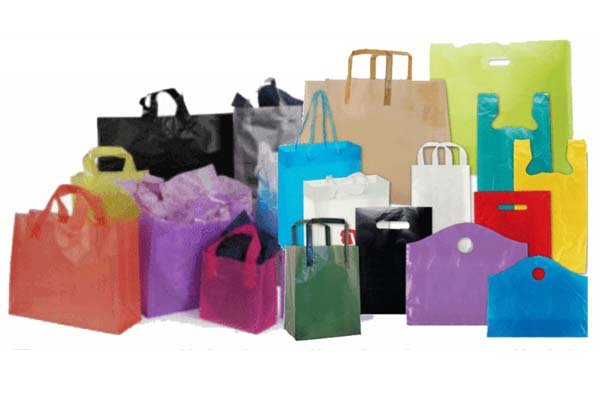
Step 1: Define Your Needs
Key questions to consider:
- What are you packaging? Heavy or perishable items may require stronger or food-grade bags.
- Who is your customer? Are they cost-focused or sustainability-driven?
- What’s your brand image? Natural brands may prefer paper; modern brands may choose sleek reusable bags.
- What laws apply? Regional regulations can restrict certain materials or bag types.
Step 2: Match Needs to Materials and Machines
BagMec® offers tailored solutions across sectors:
Retail
- Need: Cost-effective, branded bags.
- Options: Reusable loop or patch handle, or biodegradable T-shirt bags.
- Machines: Loop Handle Machine or Patch Handle Machine ($8,500–$15,500). T-Shirt Bag Machine ($17,000–$32,000) for biodegradable films.
Food Packaging
- Need: Hygienic, sealable packaging.
- Options: Laminated pouches, side-seal, or FFS bags.
- Machines: FFS Machine ($34,000–$48,000) or Wicketer Bread Bag Machine ($69,000–$88,000).
Industrial/E-commerce
- Need: Strong, durable bags.
- Options: Courier, garbage, or heavy-duty sacks.
- Machines: Courier Bag Machine or Heavy Duty Bag Machine ($12,000–$23,000).
Step 3: Quick Reference Guide
| Priority | Material | BagMec® Machine |
|---|---|---|
| Low Cost & High Volume | HDPE or Biodegradable T-Shirt Bags | T-Shirt Bag Machine |
| Reusable & Branded | PP Non-Woven or LDPE | Loop Handle Machine |
| Food-Safe Packaging | Laminated Pouches | Lamination or Side-Seal Machine |
| Durability & Security | Co-extruded Films | Courier or Heavy Duty Machine |
| Premium Appearance | Zipper Pouches | Zipper Bag Machine |
Technology for Sustainable Bag Production
Sustainable bag production demands precision machinery that conserves energy and reduces waste.
BagMec® machines incorporate servo motors, smart tension control, and PLC automation to meet modern production standards.
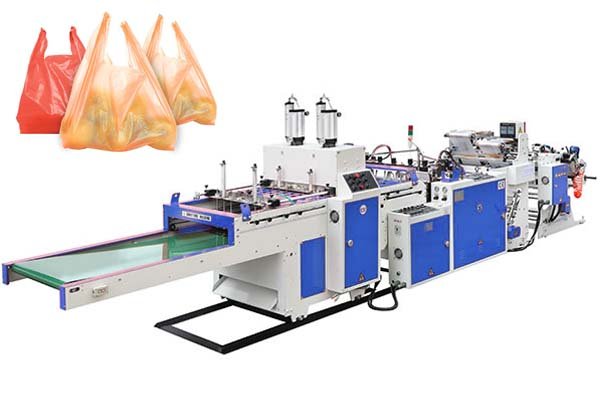
Key Technologies
1. Advanced Servo Motors
- Function: Delivers precise motion control with reduced energy use.
- Benefit: Cuts power consumption by up to 30%, lowering operating costs and carbon impact.
2. Smart Tension Control
- Function: Continuously monitors and adjusts film tension during production.
- Benefit: Reduces waste and improves product consistency—crucial for delicate biodegradable materials.
3. PLC Automation
- Function: Programmable logic controllers manage all machine functions with a touchscreen interface.
- Benefit: Ensures consistent output, minimizes errors, and allows for high-speed production. IoT connectivity also enables remote diagnostics.
Conclusion
Choosing an alternative to plastic bags is a strategic decision influenced by product needs, branding, regulations, and sustainability goals. Whether biodegradable, reusable, or recyclable, success depends on selecting the right technology. BagMec® offers the expertise and machinery needed to support this transition efficiently and effectively.




